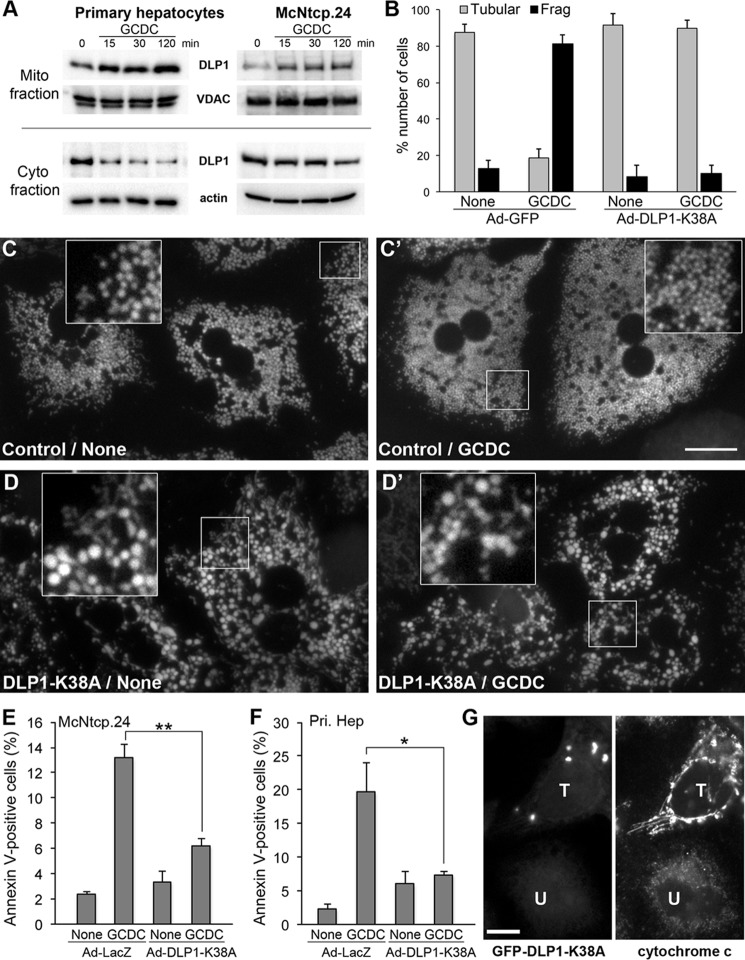FIGURE 4.
Inhibition of mitochondrial fission prevents GCDC-induced mitochondrial fragmentation and cell death. A, immunoblot of the mitochondrial and cytosolic fractions from GCDC-treated primary hepatocytes and McNtcp.24 cells shows increased DLP1 levels in mitochondria and decreased DLP1 levels in the cytosol. B, McNtcp.24 cells expressing DLP1-K38A maintain elongated tubular mitochondria in GCDC treatment (100 μm, 30 min). 50–80 cells were counted in each treatment; the experiment was repeated four times. Error bars represent S.E. C, D, and D′, inhibition of mitochondrial fission in primary mouse hepatocytes induces mitochondrial enlargement and interconnection (D). Fission inhibition prevents the formation of small fragmented mitochondria in GCDC treatment, maintaining the enlarged and interconnected phenotype (D′). Insets: 2.5× magnified images of the boxed areas. Scale bar: 20 μm. E and F, inhibition of mitochondrial fission prevents apoptotic cell death. The number of annexin V-positive cells was significantly lower in DLP1-K38A-expressing McNtcp.24 (E) and primary hepatocytes (F) in 2-h GCDC treatment, compared with control cells. 300–500 cells were counted in each treatment; the experiment was repeated three times. Error bars represent S.E. *, p < 0.05; **, p < 0.01. G, fission inhibition blocks cytochrome c release from mitochondria. Immunofluorescence of McNtcp.24 cells treated with 100 μm GCDC for 2 h shows that cytochrome c is diffuse and its level is decreased in untransfected cell (U, right panel). The neighboring GFF-DLP1-K38A-expressing cell retains cytochrome c in the elongated mitochondrial tubules (T, right panel).

